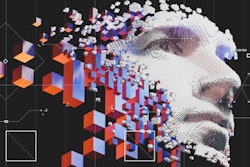
The useful integration of artificial intelligence (AI) into clinical practice -- "appropriate consumption" of the technology -- may take longer than initially anticipated, but it will happen, according to an April 30 talk by Dr. Paul Chang at AuntMinnie.com's 2020 Virtual Conference.
And it will happen as departments focus on getting IT infrastructure in place, said Chang, of the University of Chicago.
"One of the reasons many of us are interested in AI is that it offers a way to improve the way we practice radiology by improving efficiency, reducing variability, and improving the quality of our 'product,' that is, our reports," he said. "But we're probably 10 years behind other industries in embracing AI because we have yet to develop advanced IT."
Radiology tends to vacillate between enthusiasm and anxiety about new technology such as AI, Chang said. But he reminded session attendees that AI isn't radiology's first technology rodeo.
"We've gone through [adopting new technology] before," he said. "Think of PACS, speech recognition, structured reporting, and informatics."
Moving forward
In his presentation, Chang offered some insights about the implementation of AI in radiology and some suggestions on how the specialty can proceed:
AI is coming. It's inevitable that AI will be incorporated into the radiology workflow. In fact, it's necessary, according to Chang. "We have to improve the quality of our reports by going beyond a qualitative report to a quantitative one," he said. "In many aspects, we've lost our way -- that is, of being the 'doctor's doctor' and collaborating with other physicians. AI could help us get back to that as we offer more actionable information."
AI isn't "spooky." "Even the words, 'artificial intelligence' or 'neural networks' can be off-putting for people," he said. "But these technologies aren't new -- we've had them for decades. What has changed is the capacity of the GPUs [graphic processing units]." A more helpful way to talk about AI is that it is similar to statistical data mining techniques like logistic regression, according to Chang. "AI is logistical regression on steroids," he said. "That's an oversimplification, but it's a more honest way to describe deep learning and AI in radiology."
Drill for gas and build roads. "A machine-learning algorithm is like a race car," Chang said. "But it requires gas and roads, otherwise it's an expensive waste of metal. In the world of machine learning, the gas is data, and the road is workflow integration, both of which require a highly capable IT infrastructure." A good strategy is to develop radiology's data so that the department is in a position to effectively implement AI. "Hitch your wagon to big data," he said.
"Prepare your existing IT infrastructure to be able to feed and consume near future advanced decision-support agents -- including those that are cloud-based," Chang added.
As for "building the road," Chang encouraged attendees to tackle the task of fundamentally changing existing PACS networks, for example. "We don't want radiologists to continue to do what they're doing with PACS while the AI system is doing what it's doing," he said. "We want to optimize human-machine collaboration."
Focus on developing meaningful use cases. Concentrate on developing data from "must-have" applications rather than the "it would be nice to have" ones. "We need to pick use cases [to train AI] that actually move the needle for improving patient care and the quality of our service," Chang said.
Stay engaged with AI's development via professional organizations. Groups like the RSNA, the American College of Radiology, and the Society for Imaging Informatics in Medicine are actively working to track the development of AI. "AI must continue to be evaluated by real-world professional organizations," Chang said.
Neither threat nor promise
The bottom line? Keep AI in perspective, Chang said. It's neither a "horrible threat" nor a "promised savior."
"Stay calm, and don't panic," he said. "In reality, AI is nothing new. Radiology has always redefined itself when incorporating new technology -- usually to the benefit of both clinicians and patients."
To access the conference, click here. Presentations will be available for on-demand viewing for 30 days after the meeting concludes on May 1.




















